Our Lenders
We work with Lending Expert to give you access to a panel of leading lenders well placed to meet your needs at the lowest rates.

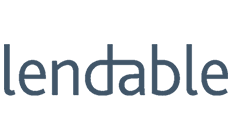


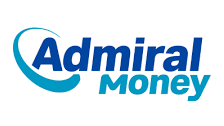
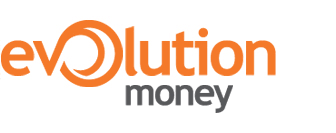

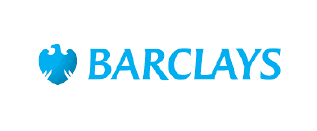
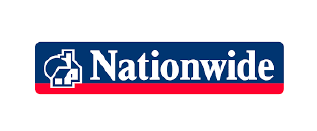

In terms of mortgages, there are a variety of different deals available. You could opt for a low-deposit mortgage or those with 40%, 50%, or 60% LTV. There are a range of borrowing options to suit your needs.
If you have saved up for a sizeable deposit, you may be able to take out a mortgage with a low LTV. This would reduce interest rates on the mortgage, and make it more affordable to borrow overall. Here, Proper Finance examines 40%, 50%, and 60% LTV mortgages- a type of secured loan with a number of benefits to explore.
What is Loan-to-Value?
Loan-to-Value (or LTV) is a percentage of the property’s value that the lenders are willing to provide you in the mortgage. This percentage is typically deemed as the amount of risk that the lender is taking on with a loan.
For example, a 40% LTV mortgage means that the lender will provide the borrower with 40% of the value of the property it’s being secured on.
The higher the LTV on a mortgage, the greater the potential loss the lender faces if the loan is not repaid. Providing that you meet the eligibility and affordability criteria, it is possible to get a range of different LTVs on your mortgage. Some LTV mortgages include:
Any mortgage with a LTV higher than this, such as 90% or 95% LTVs, is known as low-deposit mortgage. This is where the borrower will only need 5%-10% of a deposit to be considered (depending on the lender and other details of the prospective borrower’s application.)
While a higher LTV means that the borrower must provide less of the deposit, 90-95% mortgages will typically come with higher fees and interest rates compared to mortgages with lower LTVs. This is because the bigger the loan, the greater risk to the lender.
How Do 40%, 50%, and 60% LTV Mortgages Work?
Those with a 40%, 50%, or 60% LTV mortgage are borrowing either 40%, 50%, or 60% of the value of the property the loan is secured on. This means that they will have to provide a 60%, 50%, or 40% deposit on the property. This can often seem like a lot depending on the value of the property, but if possible may open up a range of available 40-60% LTV mortgage opportunities.
Before you take out any type of mortgage, it is important to discuss options with a qualified mortgage advisor. This will help you to ensure that you find a financing option that best suits your needs and personal circumstances.
Partnered with
Example of a 60% LTV Mortgage
A 60% LTV mortgage is a home loan where you borrow 60% of the value of your property from a certified lender. The remaining 40% will be paid as the deposit needed to secure the mortgage.
For example, if you are buying a property worth £400,000, a 60% LTV Mortgage would require a £160,000 deposit (40%). The lender that you have chosen will then lend you the remaining £1240,000 deposit (60%) as a loan to be repaid.
The money borrowed from your lender will be repaid over the agreed mortgage term, as well as any additional interest on the loan. Once you have fully repaid, you will then own the property outright.
The amount of money that you put down as a deposit determines how much of the property you own as you begin the mortgage. For a 60% LTV mortgage, you would own 40% of the property from the start.
What Are The Mortgage Rates for 40%, 50%,60% LTV Mortgages?
Mortgage rates for 40%, 50%, 60% LTV mortgages will vary depending on a number of factors, including:
- Your specific financial situation
- Lender policies
- Financial conditions
Generally, higher LTV mortgages will have higher interest rates compared to lower LTV mortgages. So it is important to compare offers from different lenders when applying for a mortgage.
What Is the Eligibility Criteria for a 40%, 50%, 60% LTV Mortgage?
Only those who are able to properly afford a 40%, 50%, or 60% mortgage should be able to take out this type of secured loan. You will need to be able to prove this to the lender.
While having a 60%, 50%, or 40% deposit for the property purchase is required, it is not the only criteria you will have to meet with lenders. Other criteria can apply, including the following:
- Proof of ID
- Credit check with the lender
- You are within the age requirements for the mortgage
- You are able to prove that you can afford the loan, according to the lender’s criteria and affordability checks
The exact criteria that you will be expected to meet for a 40%, 50%, or 60% LTV mortgage will depend on the lender you choose and the requirements they lay out for prospective borrowers.
What are the Pros and Cons of 40%, 50%, 60% LTV Mortgages?
There are significant benefits to taking out a 40%, 50% or 60% LTV mortgage. With all of these options being relatively low LTV, you will experience better interest rates than those offered with higher LTVS. You may also have a better chance of approval with a higher deposit even if you have a poor credit history.
These kinds of mortgages are only suitable for particular types of applicants, however. In paying almost half, or more than half of the property’s value, a 40-60% deposit is an unaffordable amount of money for many people.
If you are unable to provide such a high deposit, Proper Finance can help you explore low deposit mortgages, and find other LTV values which you may consider, including 70%, 90%, and even 100%.
What are the Mortgage Types Available with 40%, 50%, 60% LTV Mortgages?
There are a range of different mortgage types available when deciding to apply for a mortgage. The two most common types of mortgage are fixed rate and variable rate:
- Fixed Rate: A fixed rate mortgage is when repayments are fixed at a set amount for the entire duration of the mortgage deal. The key benefit of this is that you will know exactly how much you will repay on your mortgage. However, you do take the risk that interest rates may lower during the repayment term, meaning that you miss out on a better detail. Often there are high fees to change your deal before the end of its term.
- Variable Rate– a variable rate mortgage offer works against your bank’s standard variable rate and will increase or decrease by a certain percentage, according to the activity of the market. The interest rates for this type of mortgage can be lower than fixed rates, but it is important to be aware that they are subject to change.
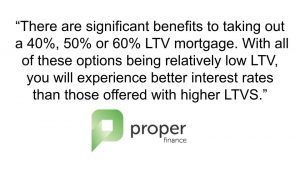
Can I Get a 40%, 50%, or 60% LTV Mortgage?
You can get a 40%, 50%, 60% LTV mortgage as long as you meet the eligibility criteria of the lender. 40%, 50% or 60% LTV mortgages can be a good borrowing option to consider for those who have 60%, 50%, or 40% of the property’s value available for a deposit.
You are able to explore these LTV mortgages as long as you meet the lender’s requirements. While eligibility criteria can vary according to the lender and the applicant’s personal and financial circumstances, there are certain common criteria required in order to be eligible.
For example, if you don’t have 40%, 50% or 60% of the property’s value to put down as a deposit, you will not be eligible for a 40%, 50% or 60% LTV mortgage. However, if you do not meet this requirement, there are a range of other LTV mortgages that borrowers can apply for with lower deposit amounts.
Partnered with